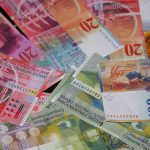Gold traded below a 4-month high as some market players reckoned the rally overdone amid expectations the Federal Reserve will continue tapering in measured steps throughout 2014, before exiting the program at the end of the year. Assets in the SPDR Gold Trust, the biggest bullion-backed ETF, rose yesterday for a second day, the longest streak of gains since the two days through January 30.
On the Comex division of the New York Mercantile Exchange, gold futures for settlement in April fell by 0.3% to trade at $1 334.00 per troy ounce by 07:50 GMT. Prices touched a session high at $1 338.30 per troy ounce, while day’s low was touched at $1 332.60 an ounce. Yesterday, prices touched $1 339.10 per troy ounce, the strongest level since October 31st.
The yellow metal settled last week 0.4% higher, after a 4.1% advance in the previous 5-day period, the biggest weekly gain since the period ended August 16. Gold futures are up 11% this year after a rout in emerging markets and signs of slowing US growth, boosted demand for haven assets.
However, the precious metal settled last year 28% lower, the steepest annual decline since 1981 as investors lost faith in the metal as a store of value and amid speculation Fed will continue scaling back its monetary stimulus throughout 2014.
“Although recent economic data point to slower growth in the U.S., it’s not enough to change the stimulus-reduction process that’s already in place,” said Zhu Siquan, an analyst at GF Futures Co., a unit of the Guangzhou-based firm that bought Natixis Commodity Markets Ltd, cited by Bloomberg. “While we’ve seen more haven bids because of turmoil in emerging markets, we’ve also seen physical demand fade as prices rise.”
Chinese demand
On the Shanghai Gold Exchange, trading volumes for spot bullion of 99.99 percent purity declined for a second day yesterday and bullion for immediate delivery has traded at discount to London prices since February 20th.
Higher bullion prices have hurt demand in China, which according to data by the World Gold Council, China overtook India as the largest global consumer last year.
Chinese demand climbed 41% to 1 176.4 metric tons in 2013, compared to a year ago, data by the nation’s Gold Association showed.
US economy outlook
Few downbeat US reports spurred speculations that the economy may slow its growth, fueling demand for gold as a haven asset.
The US National Association of Realtors reported on Friday that home purchases declined 5.1% to a 4.62 million annualized rate in January, trailing analysts’ forecasts for a smaller drop to 4.68 million from December’s 4.87 million units sold in the previous month. The report added to concerns that the US housing market is not recovering as expected.
On Thursday, the Philadelphia Fed index, which is a closely watched gauge of US manufacturing activity in the Philadelphia region, came in at -6.3 in February, the weakest level in a year, confounding analysts’ expectations for a smaller decline to 8.0 from 9.4 in the previous month.
The US Bureau of Labor Statistics reported that the index of consumer prices in the country rose 0.1% in January compared to a month ago, in line with analysts’ estimates and after the index gained 0.2% in December. The annualized consumer price inflation came in at 1.6% last month, matching the median expert’ forecast and after a 1.5% increase in December. Core consumer prices, which exclude the volatile food and fuel categories also advanced 0.1% in January from the preceding month, while the annualized consumer price inflation increased at a 1.6% pace.
However, a report by Markit Economics revealed that its preliminary PMI rose to 56.7 in February, from a final reading of 53.7 in the previous month, capping the largest advance since May 2010, while analysts predicted a decline to 53.0.
A separate report by the US Department of Labor revealed the number of initial jobless claims declined by 3 000 to 336 000 in the week ended February 15th, from a week ago, when 339 000 Americans filed for initial jobless benefits.
At the same time, the minutes of Federal Reserve Bank’s policy meeting on January 28th-29th showed that several policy makers said in “the absence of an appreciable change in the economic outlook, there should be a clear presumption in favor” of continuing to pare back the central bank’s monthly monetary stimulus by 10 billion USD at each meeting.
As the rate of unemployment decreases at a faster than expected pace, even while other labor-market indicators signal weakness, bank’s policy makers agreed that it would “soon be appropriate” to revise their guidance about the time horizon of record-low borrowing costs.
The Federal Reserve announced in December that it will pare monthly bond-buying purchases by $10 billion, after which it decided on another reduction of the same size at the meeting on policy in January, underscoring that labor market indicators, which “were mixed but on balance showed further improvement”, while nation’s economic growth has “picked up in recent quarters.”
The central bank will probably continue to pare stimulus by $10 billion at each policy meeting before exiting the program in December, according to a Bloomberg News survey of 41 economists, conducted on January 10th.
Assets in the SPDR Gold Trust, the biggest bullion-backed ETP, were increased yesterday for a second day to 801.61 tons. The fund has lost 41% of its holdings in 2013. A total of 553 tons has been withdrawn last year. Billionaire hedge-fund manager John Paulson who holds the biggest stake in the SPDR Gold Trust told clients at the end of last year that he wouldn’t invest more money in his gold fund because it isn’t clear when inflation will accelerate. However, a government report revealed that the owner of the largest stake in the SPDR Gold Trust, kept his holdings unchanged in the fourth quarter of 2013.





